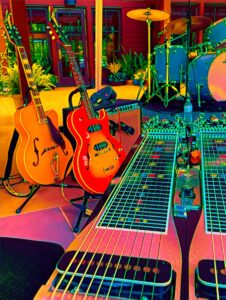As an Amazon Associate Playpedalsteel.com earns from qualifying purchases. This page contains affiliate links.
If you’re interested in buying a pedal steel guitar then understanding more about the steel’s features and characteristics can be helpful. Also consider how much a pedal steel guitar typically costs, which depends on several factors such as the pedal steel guitar’s brand, history, construction, type, features, and more.
When purchasing a pedal steel, you’ll want to consider your budget and what you will be using the instrument for. Because of their niche market pedal steels usually hold their value if you’d ever like to resell one.
Table of Contents
- Good Things To Know Before Buying
- Where To Buy
- What Gear and Accessories Will I Need To Play?
- Supply and Demand
- Bringing A Player With You When Buying
- Will the Pedal Steel Need Work Done On It After Buying?
- Pedal Steels That Need Some Work Or Repair
- Types of Pedal Steel Guitars
- What Pedal Steel Should I Buy?
- Cost of Pedal Steel Guitars
Good Things To Know Before Buying
- Most pedal steel guitars are very durable, sturdy in construction, and have good craftsmanship. Basically, they will often last a lifetime if cared for properly.
- Pedal steels will often come from a dependable builder, manufacturer, or brand. These pedal steels can be more trusted in their value and functionality.
- The parts/materials, equipment, labor, the unique skill-set and expertise involved with building it, etc. affect the price of pedal steels. These things will often bring up the general cost of pedal steels. Most pedal steels are high-quality instruments.

- Many pedal steels are double necks (essentially two tunings and guitars built into one body/instrument), and this can add more to the price and often the value.
- Always check to see if the pedal steel is in good shape mechanically, has been set up properly, and will stay in tune. These things are important because if the pedal steel needs some work or repair done to address these issues, then this will cost more money in the long run.
- To have work done you’ll probably have to find and locate a skilled repair person or builder for pedal steels. This is a very specific skill set when it comes to this unique instrument.
- Pedal steels aren’t really manufactured in factories or on a mass scale like guitars or other more popular products are, so it isn’t easy to keep the price down on a brand new, high quality pedal steel.
Where To Buy
There are less locations and places to sell pedal steel guitars compared to other instruments, so many times these sellers list the pedal steel on Facebook Marketplace, Craigslist, the Steel Guitar Forum, or will put it on consignment at a local music shop.
Nowadays, most pedal steels are sold online, as there isn’t a huge market for selling them at music stores because of the relatively low amount of people that are interested in playing it (or are even aware of what it is!).
There isn’t a high turnaround rate for selling these at music stores usually, which is why there is low incentive for most music stores to carry them.
What Gear and Accessories Will I Need To Play?
When you buy a pedal steel, you’ll often have the option to purchase other types of equipment for playing. Sometimes the person or store you’re buying it from will sell some of these pieces of gear as a bundle.
If you’re new to the instrument, keep in mind that there are certain accessories and gear that you’ll need to play the instrument. Traditionally, most pedal steel players use a volume pedal, finger picks, and have a tone bar to fret notes.
Also consider that you’re going to need an amp to play through, and most players have a steel seat that functions as a case for holding important gear. You’ll also want an extra set of strings in case one breaks, or if the guitar needs a fresh set.
Below is a list of gear and accessories that most players use for the instrument. I’ve used many of these specific items professionally for the last 10 years, and they are also used by other pedal steel players.
- Volume Pedal: Goodrich’s L-120 LowBoy (available on Amazon)
- Tone Bar: Dunlop’s 920 Stainless Steel (available on Amazon)
- Finger Picks: National NP2 Nickel-Silver (available on Amazon)
- Thumb Pick: Fred Kelly Slick Pick (available on Amazon)
- Strings for E9 Tuning: Emmons Signature Strings (available on Amazon)
- Tuner: Peterson StroboStomp HD (available on Amazon) or Peterson StroboClip HD Clip-On (available on Amazon)
- Nylon Pedal Tuning Tool: 3/16″ Klein Nut Driver (available on Amazon)
- Pedal Steel Seat: Steeler’s Choice (link to their website)
- Amplifier: Fender ’68 Custom Twin Reverb (available on Amazon)
You’ll also want to consider using some effect pedals, such as delay, and always be sure to have cables for your pedal steel rig. I’d use a 3 foot cable for connecting the pedal steel to the volume pedal, then another longer one for running the volume pedal into the amp.
I recommend getting some higher quality cables that are less likely to give you problems at gigs and rehearsals, and will sound good for recording or playing in general. I use Mogami’s Gold 3ft Cable (link to Amazon) and for running a longer cable to the amp I’d use Mogami’s Gold 18ft Cable (click to view on Amazon).
Supply and Demand
Considering it is somewhat of a commodity in the instrument world, with its unique sound and history, pedal steels can be desirable for many prospective buyers.
There is certainly a demand for pedal steels in regards to the availability of them on the market.
Many pedal steel players regularly own multiple guitars, and will be on the market for pedal steels to either replace or upgrade already owned ones. They may also be looking for a pedal steel guitar that offers something new or different to them.
And there are definitely new players that are taking up the instrument.
Bringing A Player With You When Buying
It is often a good idea to bring an experienced pedal steel player or builder along to look at and play a pedal steel in person, before purchasing it.

If this isn’t possible, then having a player take a look at some photos or ask some particular questions can be helpful.
The player will probably really want to take a look at the pedal steel’s undercarriage, the tuning, its copedant, the changer, the brand/model, the year it was made, and also inquire about its history.
Will the Pedal Steel Need Work Done On It After Buying?
Oftentimes used pedal steels aren’t functioning properly, or won’t play in-tune cause they’re not set up properly. They may also have some issues that the seller is unaware of due to low knowledge of the mechanics, construction, and value of the instrument.
The pedal steel may look neat and like it has everything going on for it, but in reality it may need a good bit of work and attention.
After you purchase it, then have the work done to it, you may find yourself spending too much. This can be avoided if you are aware that it will need to be repaired or set up.
You may be better off purchasing a different pedal steel if you don’t want to have to get work done to it after buying. If so, look for one in good functioning condition, which may be higher quality from the get-go.
Pedal Steels That Need Some Work Or Repair
Some used pedal steels cost between $1,000 and $2,000 because they are great guitars, but do need a little work or repair done to get them fully functioning.
Also, they may have some slight wear and tear and cosmetic aspects that, due to its age, may decrease the value of the pedal steel.
Once purchased, and the work or repair is successfully completed, then these pedal steels can hold a higher value for playability, and make it easier to resell.

There’s nothing like a little tender, love, and care to bring something back to life: the same is true with many used pedal steels. Many of these instruments can become great steel guitars to own and play.
Types of Pedal Steel Guitars
The pedal steel guitar has a distinct sound and interesting history, and is much more uncommon than many other musical instruments.
Learning more about what makes them different can help in evaluating pedal steels that you may potentially purchase.
The type of pedal steel guitar a player uses is determined by the amount of necks on the instrument, what tunings are used, as well as the changer mechanism. Some pedal steels have two necks, which are called double neck guitars, and single neck guitars often have the E9 tuning.
Older pedal steels will commonly have a push-pull changer mechanism or a pull-release mechanism, while modern pedal steels mostly have all-pull systems.
The tone of pedal steel guitars, as well as their functionality, is often affected by what type of guitar it is. Let’s take a closer look as to what makes each pedal steel unique.
Single Necks vs. Double Necks
Many pedal steels have a single neck built into the body of the guitar, and are thus called a single neck.
These guitars are usually lighter in weight than double necks, and often have the standard E9 tuning with ten strings. This tuning is commonly associated with the “classic Nashville” sound of pedals moving the pitches of strings up and down to create all kinds of expressions.

Single necks often have three floor pedals, and about four knee levers. These pedal steels are often called S10 or S-10 in the pedal steel community.
If a single neck pedal steel has a pad built into the front of it, then it is often called an SD-10. These pads allow a player to comfortably rest their arms while playing the instrument.
Double neck pedal steels have two necks on the body of the guitar, which usually have ten strings for each neck.
The neck closest to the player is usually a C6 tuning, which is often utilized for jazz and western swing styles of playing due to the wider intervals of the tuning. The other neck is the E9 tuning, the tuning commonly found on single neck guitars.
Double neck pedal steels are usually more expensive and heavier, but if you learn how to play both necks, you may have more capabilities for expression. Double necks are commonly referred to as D10 or D-10 pedal steel guitars.
Changer Mechanisms
All-Pull Systems
Most modern pedal steels are built with an all-pull system, and these guitars are often easier to modify mechanically for setups and changing pedal or lever combinations.
All-pull pedal steels can also be less expensive than other types of pedal steel guitars, as all-pulls are usually more cost effective to build or produce. These are more commonly built nowadays.
Push-Pull and Pull-Release Systems
Many older types of pedal steels use the pull-release or push-pull mechanisms.
These systems are usually a little more limited in their ability for quick and efficient copedent changes, or setting up and customizing the guitar’s raises and lowers. However, this doesn’t mean they aren’t great playing pedal steels!

Push-pull and pull-release pedal steels are usually noted for their great tone, and can often have many pedal and knee lever changes as well, to suit a player for their needs.
Older Emmons model push-pull pedal steels are desirable for their sound, and their more limited supply because they are no longer made anymore.
Also, pull-releases are said to have a tone that is similar to push-pulls, but always keep in mind (for any instrument) that its tone can be very subjective and based on perception.
Tone is also greatly affected by how the instrument is played by the player!
Universal Pedal Steels
Sometimes a single neck pedal steel will be a universal tuning with more strings, and these are often designed to combine characteristics of the double neck’s two tunings into a single neck guitar.
The universals often have more than three pedals to accommodate more changes for the tuning.
Pedal steels that use a universal tuning often contain 12 strings, and the tuning allows a player to utilize many of the main functions of both the E9 and C6 tunings on one neck.
Although not every aspect of both of these tunings will be contained within this tuning, there are numerous advantages to Universal tunings.
It will allow a player to only have to use and learn one neck, and having a single neck guitar will be lighter, more cost-efficient, and easier to transport.
Universal pedal steels may be less in demand and harder to resell, but a player who chooses to use this type of pedal steel can get a lot out of the tuning.
What type of pedal and knee lever configuration does the pedal steel have?
Different types of pedal steels have varying amounts of pedals and knee levers to raise and lower the string pitches.
Most single-neck E9 pedal steels have about three foot pedals, and three to four knee levers. Many double neck pedal steel guitars have eight foot pedals, and at least four knee levers.
Some pedal steels can even have upwards of 10 pedals and several knee levers.

Taking a deeper look at the tunings and copedants involved with a particular pedal steel can help you understand more about how these actual pedals and knee levers affect the instrument’s tuning.
Different Brands, Manufacturers, and More
Generally, most pedal steels will contain the same basic features, and allow a player to use foot pedals and knee levers to raise and lower the pitches of strings.
However, taking a more detailed look at other aspects of the pedal steel guitar can reveal a lot more about it.
Look at what brand or manufacturer made the pedal steel, and if the pedal steel is a modern one, or an older pedal steel. I posted a list of pedal steel brands where you can see many of the current builders and manufacturers.
Many of the older brands and models aren’t made anymore, and can be incredible pedal steels to play and own. They often sound great.
Also, check out if there is a certain builder that made the guitar.
Paul Franklin’s (famed pedal steel guitarist that has played with many great artists including Dire Straits) father has built some amazing pedal steels under the brand name “Franklin.”
Franklin pedal steels are often very valuable in the pedal steel market.
Beginner Models
Many beginner model pedal steels are built with simpler mechanics and have less pedal or lever options. They will often use lighter materials and parts, and may have pickups that aren’t as high in quality compared to professional models.
These pedal steels can still sound great as an instrument, and can be a great value if you’re looking for an instrument to begin learning on.
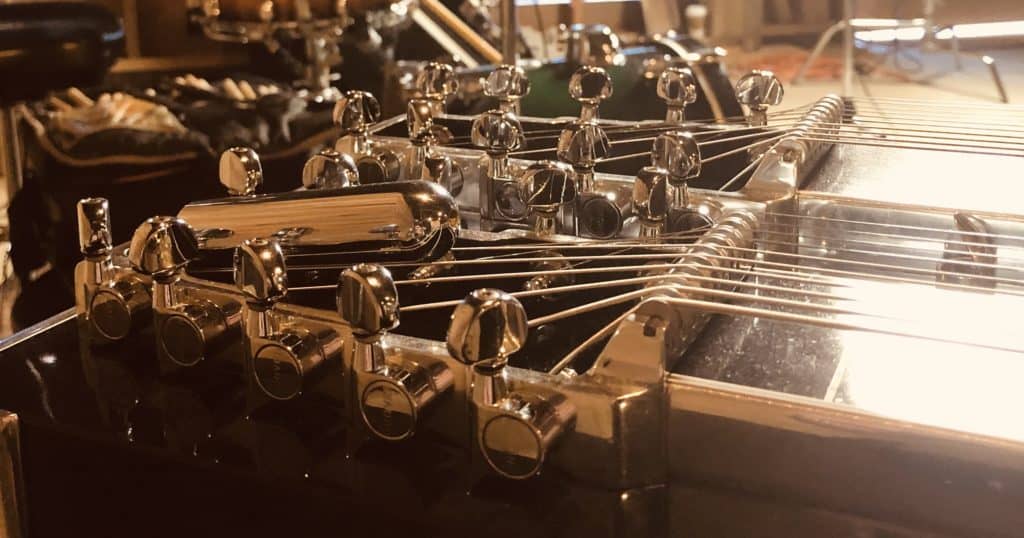
You can transition to a professional pedal steel once you feel comfortable that you’ll want to keep playing it in the long run. Also, you can always upgrade to a new one if you’d like a higher-quality pedal steel to learn on.
Carter Starters are often a beginner model that can land around the $900-$1,000 price range, and have been used by many players as an entry into the pedal steel world.
What Pedal Steel Should I Buy?
The following list will help in understanding the cost and value of a pedal steel. Remember to consider these features before purchasing.
- Brand, history, construction, type, features
- Budget
- Use of the instrument (gigs, learning, collectible, etc.)
- Professional or student model
- Reliability and durability
- Sound and tone
- Will you be reselling it possibly? Consider the demand and supply of the particular instrument.
- Builder, manufacturer
- Functionality
- Craftsmanship
- Tuning
- Double neck or single neck
- Is it mechanically functioning well?
- Do the pedals and knee levers stop and return to the desired notes and stay in tune at each of them?
- Weight of the guitar
- Location of the guitar
- Shipping costs
- Will you realistically be able to find another one in a relatively short time frame that can offer what this steel offers or doesn’t?
- How does the undercarriage look?
- Quality of parts and construction
- Number of pedals and knee levers
- Color
- Shape and size
- Does it come with a case?
- Does it come with accessories or an amp? These will add up in cost as a player begins purchasing more for the instrument.
- The type and quality of the pickups
- Special features, or attention to detail (like inlays, or tone controls, etc.)
If taken care of properly, a pedal steel will probably hold its value. Although like anything that is bought brand new, its value usually automatically goes down a bit once it “rolls off the lot.” Since it is now considered used it is slightly less valuable than a brand new pedal steel.
Cost of Pedal Steel Guitars
$3,000 to $5,000
Many pedal steels cost between $3,000 and $5,000, especially used guitars that are professional quality. Whether buying one that is brand new, or in used condition, pedal steel guitars that are for sale are often in this price range.
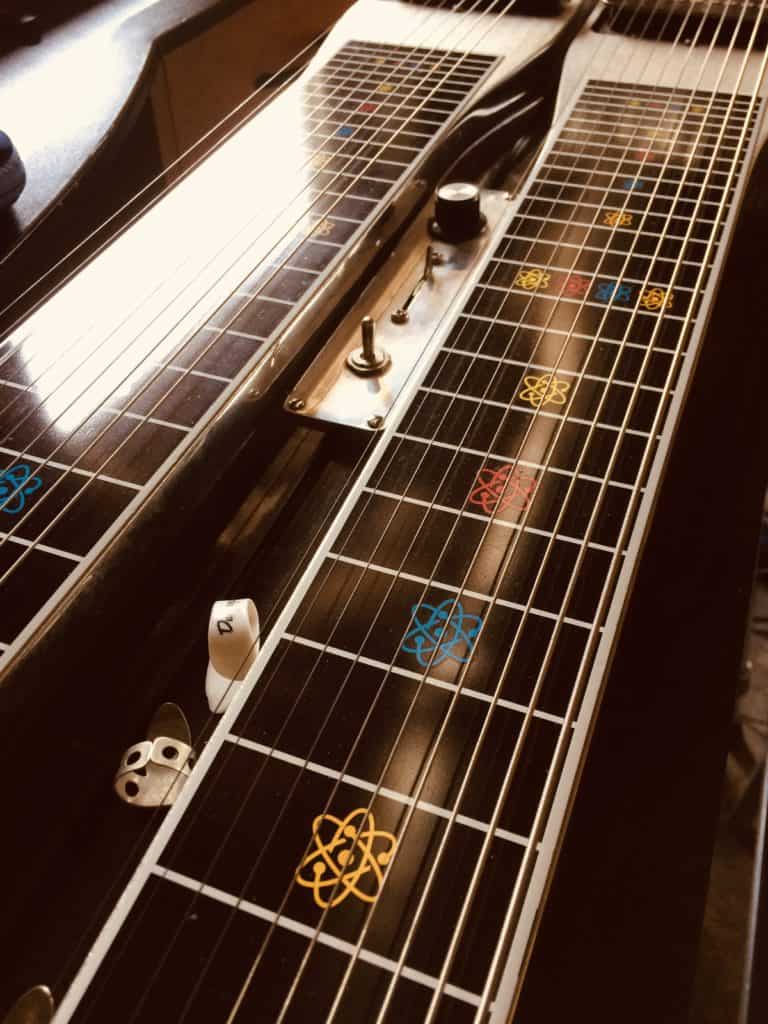
If you’re looking for a professional pedal steel guitar then you’ll usually have to spend at least this amount of money. A professional pedal steel is usually reliable, durable, sounds good, and can likely last a lifetime.
If it’s within your budget, and you invest in a pedal steel in this price range, then it will most likely be worthwhile.
If you see a pedal steel for sale that falls in this price range, consider some of these factors when thinking about how much the pedal steel guitar costs.
$5,000 to $7,500
Nowadays, brand new pedal steel guitars can often cost more than $5,000, especially when you begin to consider its high functionality. Some pedal steels can have at least several pedals and knee levers, and have aesthetic value.
Pedal steel guitars that cost this much are often higher-end in quality. They can be new or used. New double neck pedal steels, especially with extra accessories or features, are likely to be above $5,000 brand new.
Pedal steels in this range may be more challenging to sell at their initial price. Usually less players are looking to invest in this price range of guitars, especially when they go even higher than the $5,000 range.
Many are sold in this price range however, but the turnover rate may not be as quick, and the pedal steel may not always or immediately sell for the price someone may like it to.
Some used pedal steel guitars do cost this much to buy, and they’re often from well-known builders who usually haven’t built a huge number of pedal steels. And there’s a good chance the particular brand or builder isn’t making them anymore.
This definitely makes them one-of-a-kind and more desirable. If the pedal steel has a lot of features and special attention to detail (like nice inlays for example), then it can often adds more to the price and value.
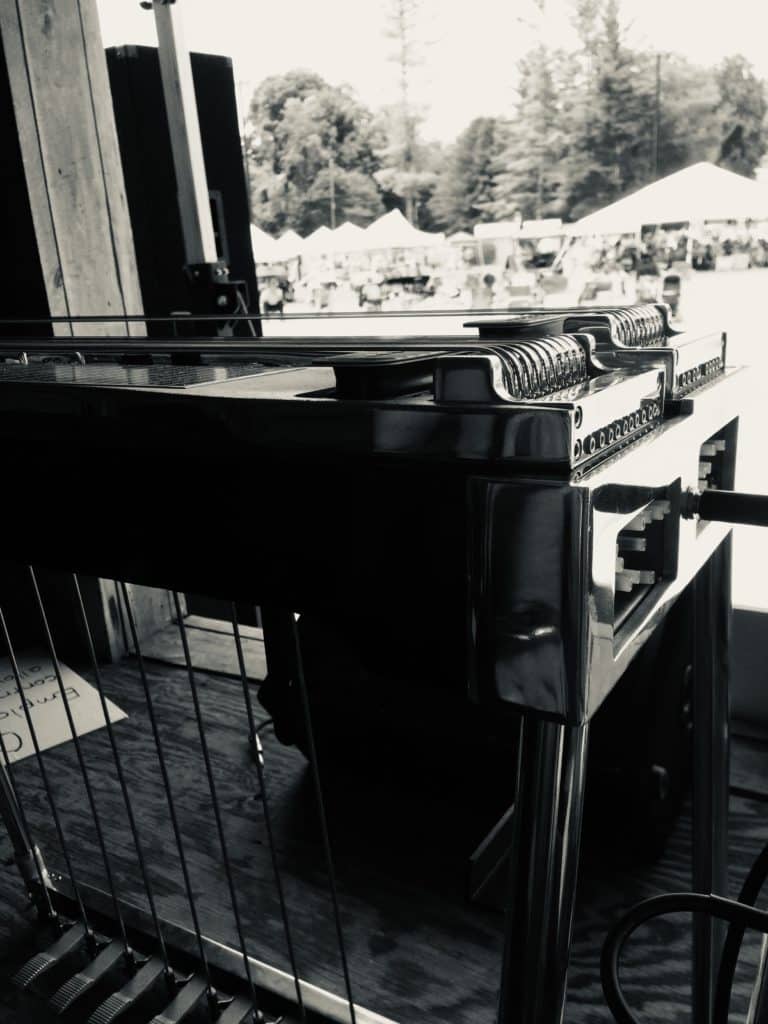
Also, some older vintage and rare pedal steels that are in decent shape for their age may fetch a price in this range…they are collectible and the cost will reflect this. Like anything collectible, it is a good idea to really research and know what you’re purchasing, as determining its value is important.
The pedal steel community and other players’ opinions can be really helpful for this, and most likely a buyer of a higher end collectible like this really knows why they are paying the price they are for the pedal steel guitar.
A pedal steel guitar that was played by a famous musician can also increase the price of a pedal steel guitar, as once again the cost is reflective of it being rare and collectible.
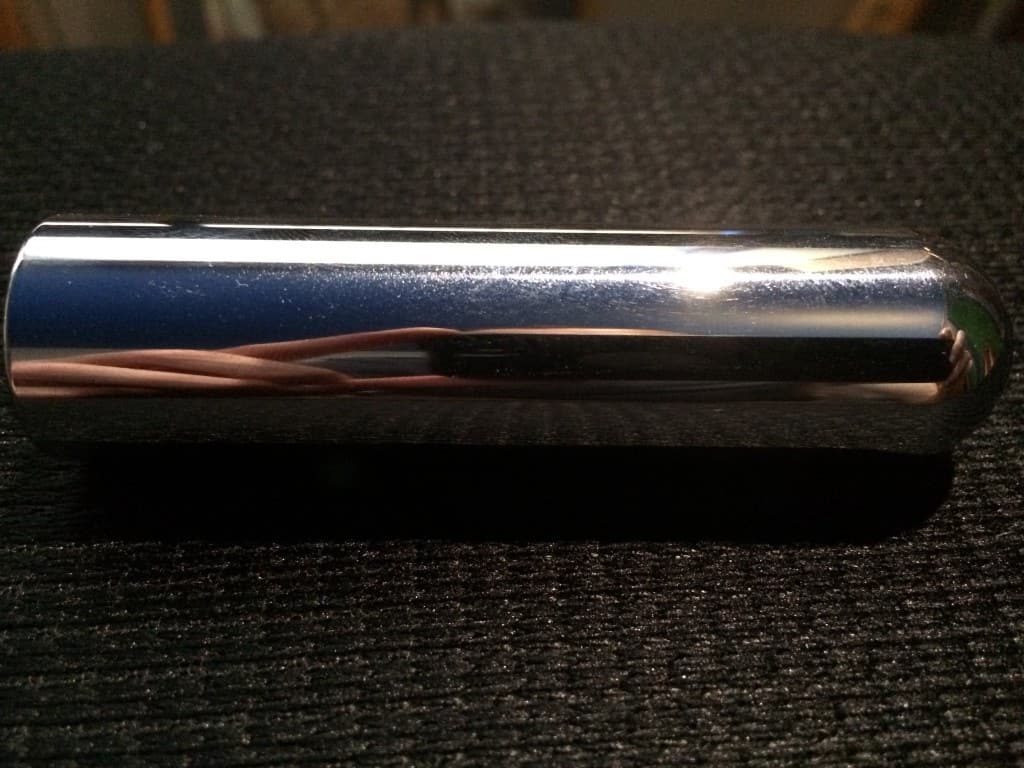
$1,000 to $2,000
Pedal steel guitars that cost this much need certain considerations before purchasing. This price range can be tricky to determine if the pedal steel is worth investing in.
If the pedal steel is in this price range, then it can be due to the following reasons…
- It is a beginner model
- Needs work and set up done to function properly
- It’s actually a great deal at a great price
- It is a used, older single neck guitar that may not be highly in demand for players. This may be a great guitar to learn on if it is functioning properly, and may also be professional in quality! (I’ve bought used Marlen pedal steels on Craigslist that ended up being professional guitars that sounded great and functioned well for less than $1,000!)
- It has been highly modified from its original state, and may have parts that aren’t original for the guitar. It has been “Frankensteined”!
This price range is usually great to keep an eye on if you’re looking to snatch up a good deal.
Although they happen once in a blue moon, sometimes great pedal steels can fall in this price range. Especially if the seller isn’t a pedal steel player and is just looking to get cash from the sell.
$7,500 and Higher
Most often pedal steel guitars that cost this much are collectibles for one reason or another.
As mentioned above, the price is so high because maybe a famous musician owned it, or the builder was highly respected and there aren’t many guitars like this that represent their work.
Another reason they could be collectible is that the particular brand, model, type, and year of the pedal steel guitar is very rare and sought after by players, which certainly adds to the cost of the pedal steel.
If you’re looking for a pedal steel in this price range, then it is likely you already play the instrument or know what you’re looking for. Or you may be looking to invest in a collectible, or higher end pedal steel guitar out of preference.
A Great Deal, A Steal of a Steel
$1,000 or less
In some instances, a pedal steel may be priced around $1,000 or less.
Although much more rare, some used pedal steel guitars that come up for sale are in this price range, and these can be great deals due to a variety of reasons.
Because the instrument is less common, some previous owners don’t always know the true value of the pedal steel in its market, and will guess at the price they think it’s worth.
Sometimes a seller is just looking to move an older, used pedal steel quickly, and maybe they’re downsizing their possessions and don’t care much about the price. Maybe a family member once owned the instrument.
These kind of deals are definitely uncommon, and often the pedal steel needs a little attention and repair or setup work. But not always, sometimes a good find is just that!
There’s no reason why it’s not possible to find a quality used guitar that works well in this price range. Better grab it quick though, cause someone else will if you don’t!
Again, as mentioned earlier, pay particular attention to any mechanical, tuning, or setup issues that the pedal steel may have.
Also, many pedal steels found in this price range could likely be beginner models as well. Keep in mind the same factors mentioned above when considering a beginner pedal steel guitar.
Any working pedal steel in this price range can be a great guitar to begin learning on. Since the price is so much lower, the risk in purchasing one and then not wanting to keep it is much lower.
Plus, you’ll probably be able to sell it again for not much of a loss if you’d like.
If you see a pedal steel in this price range, that you think may be a good deal, beware though!
Pay attention to any factor that contributes to the price being so low.
A Worthwhile Investment
Understanding more about the different aspects of pedal steels can help determine which one you’d like to play, especially if you are new to the instrument.
You will want to consider your budget, if you plan on playing one neck or two, how long you’ve been playing for, and your goals with the instrument.
Playing pedal steel guitar, no matter what type it is, is a great way to create music and there is a lifetime of learning and musical fulfillment to enjoy.
Thanks for checking out this page, hope it is helpful and makes playing more enjoyable! If you’re interested in diving deeper into playing E9 pedal steel, check out these resources and guides…
The Chord Guide for E9 Pedal Steel (E-Book, Digital Download)
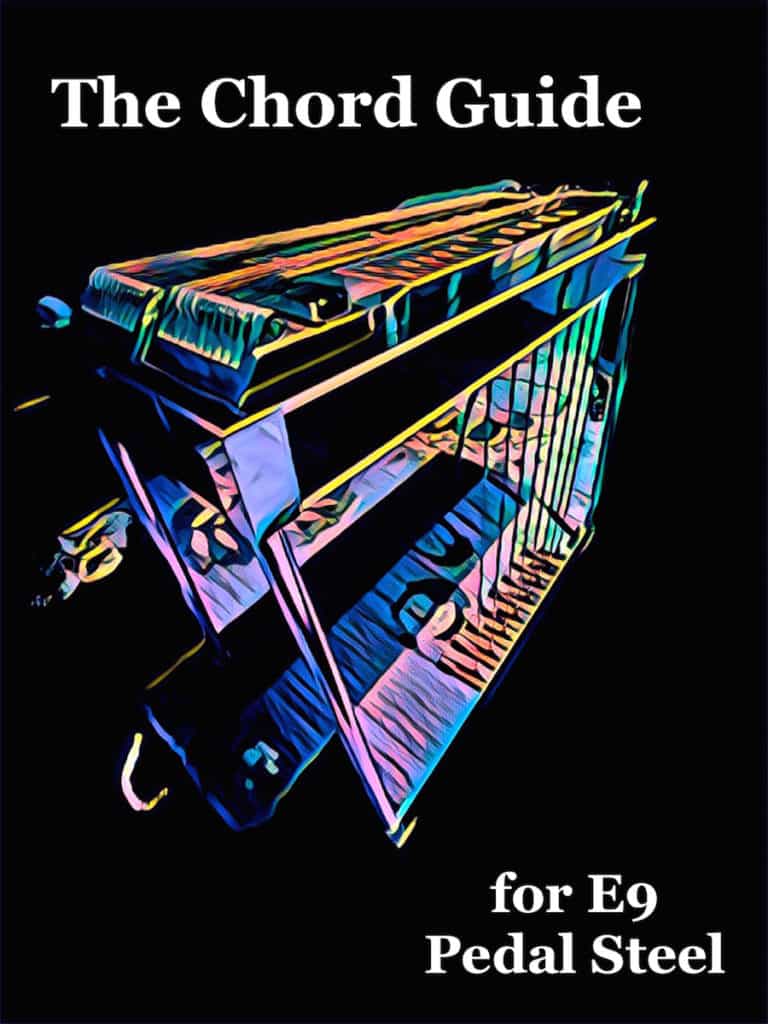
Learn the chords on the E9 neck in a way that makes playing simple and enjoyable…
- Almost Every Chord You’ll Ever Need for E9
- Intuitive and Easy to Use
- Make Use of Pedal and Lever Combinations
- Example Tabs of Chord Movements
- Easily Utilize the Nashville Number System
- Great For Any Key and Style of Music
Includes a bonus section of over a hundred pages of extra chord charts, key references, and more!
You may also like…
200 Country Riffs & Licks for E9 Pedal Steel
Add these country licks to your playing repertoire…
- Easy to Read Format
- Includes Rhythmic Notation
- Playing Over Chord Changes
- Great for Country, Alt-Country, & Honky-Tonk Styles
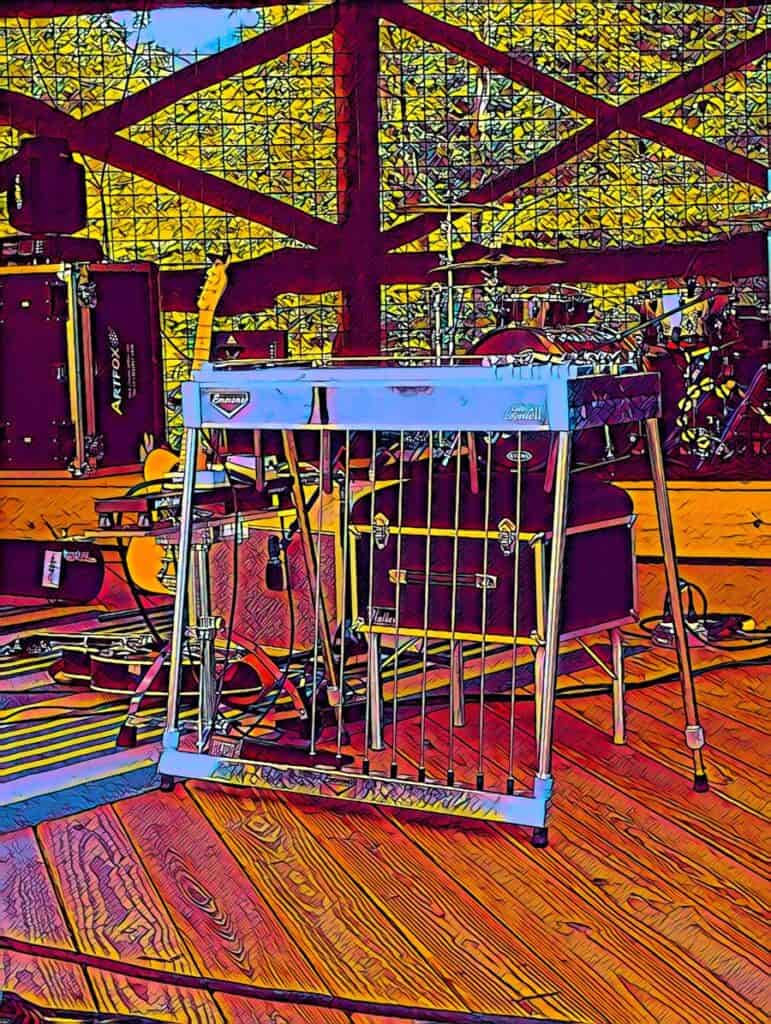

The Scale Book for E9 Pedal Steel
Over 1,000 Pages with Tabs and Diagrams!
- Easy to Use Reference for Practicing
- All Major and Minor Pentatonic Scales, Modes, Major Scales
- All Keys, and Covers the Fretboard
- Includes Pockets of Scales
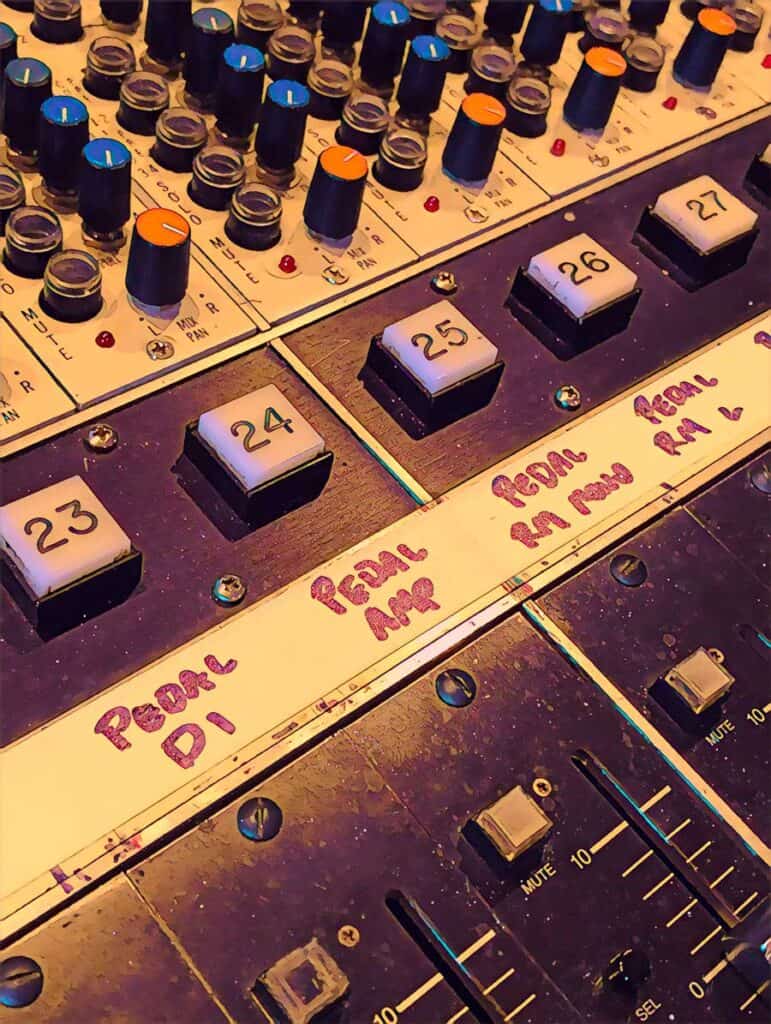
Harmonized 6ths
- Hundreds of Riffs, Licks, and More
- How To Play Sixth Intervals on the E9 Neck – Over Any Chord
- Utilizes The Pedals and Knee Levers
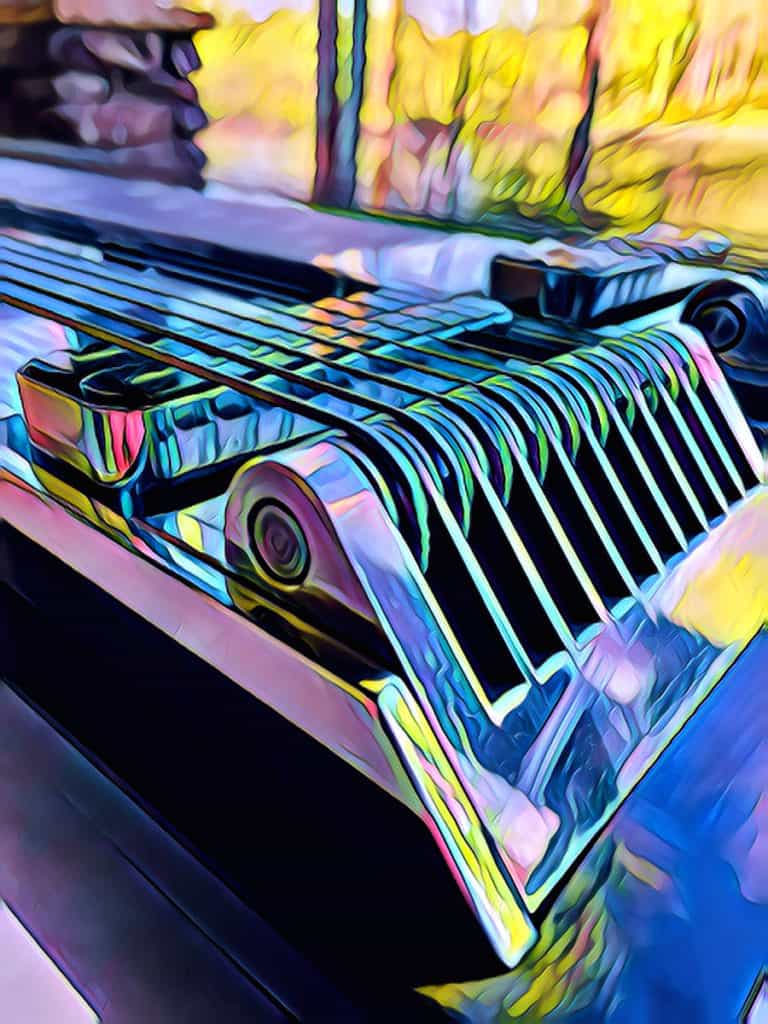
Right Hand Picking & Blocking
- An In-Depth Guide to Picking and Blocking
- Perfect Your Technique
- Includes Graphics, Illustrations, & Practice Exercises
For pedal steel tabs, scale diagrams, and chord charts click here…
